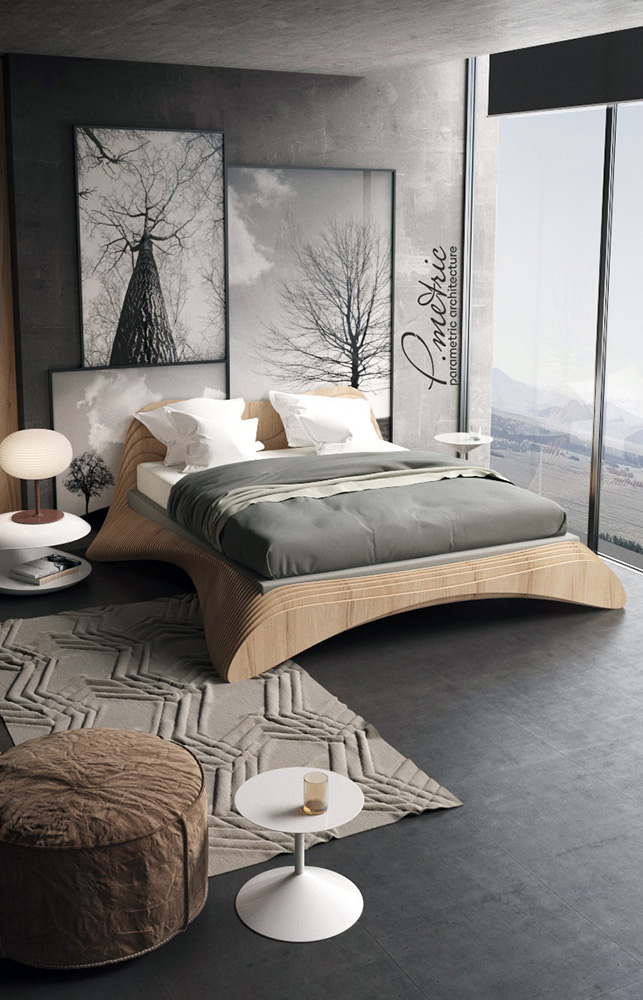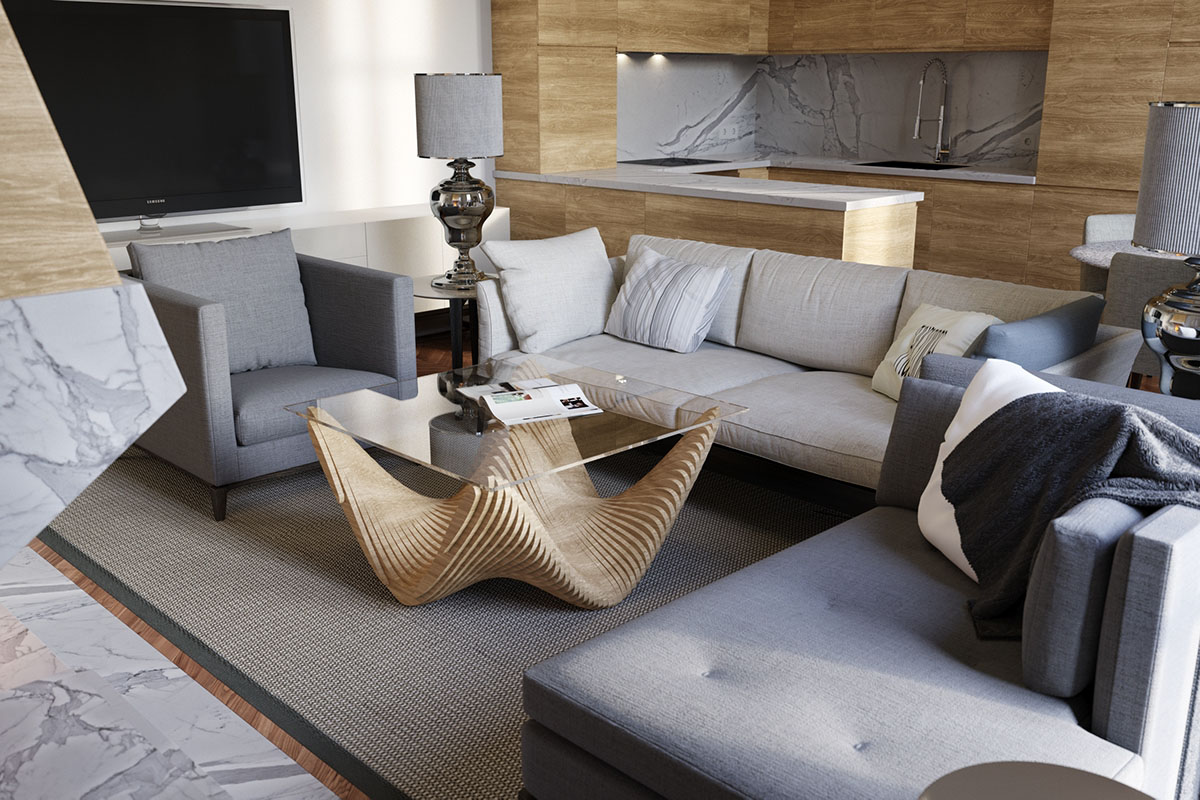
13.
Invention, Intellectual Property and Income
Assignments
individual assignment
develop a plan for dissemination of your final project
prepare drafts of your summary slide (presentation.png, 1920x1080)
and video clip (presentation.mp4, 1080p HTML5, < ~minute, < ~10 MB)
and put them in your root directory
Table of contents
Invention and intellectual property
What my project offers
My final project consists in making furniture that can also be a home for plants.
Design from Yanko Design. Mine isn't as nice and is a waffle structure.
Its purpose isn’t specific to a need I have and is aimed to be used and made by anybody around the world. It should be easy to make, with simple materials and access to even the smallest of Fab Lab. For the most simple version of the project, all you would need a CNC machine - which is a must in any Fab Lab.
I believe a lot of the success in this project is people contributing with designs of their own that can minimise the footprint of the furniture and allowing for space to grow plants on it.
A varied catalogue of furniture would also bring more attention and more choice for possible makers to choose from, resulting in a larger user base.
What to take into account
The idea is combining two very common things: making furniture and growing plants. You can’t really copyright that.
The only thing that is important to consider is the integration of the bio-photovoltaic system developed at IAAC. The project has been developed since 2014 and has been posted publicly on their website, but nowhere is there any licensing mentioned. I have talked to the creators of the project and they are planning to release documentation on how to make the system.
What license I chose
This essential contribution from designers, the broadness of the idea and the integration of other projects is why I’ve decided to go for a Creative Commons Attribution 4.0 International license which allows everybody to do what they feel like with my project. The license says:
- Attribution : You must give appropriate credit, provide a link to the license, and indicate if changes were made. You may do so in any reasonable manner, but not in any way that suggests the licensor endorses you or your use.
- Share : you are free to copy and redistribute the material in any medium or format
- Adapt : remix, transform, and build upon the material for any purpose, even commercially.
- No additional restrictions : You may not apply legal terms or technological measures that legally restrict others from doing anything the license permits.
Sit & Grow by
Benjamin Scott CC BY 4.0

Why Creative Commons?
Simply because it is the one I’ve heard about the most in the past, when I didn’t know anything about licensing, and therefore I assume is the one most people have heard of. Maybe that is because I come from the world of video making where copyrights of your creative material is quite important.
As I had poor knowledge in software licensing, I didn’t know if Creative Commons could be applied to it. After some research, I found that their F.A.Q. advises against it, and instead points us to other licensing platforms such as Free Software Foundation and Open Source Initiative. If I had to license some software I think I would head to the Open Source Initiative as it lists all their approved open-source licenses and clearly explain what they do.
In my case I don’t have any software to license, so I’ll ignore that part.
Useful links:
Understanding Creative Commons
Choosing your Creative Commons
Licenses for Softwares
Income and motivation
No income, pure motivation… for now.
My motivation about this project is to get people to grow plants at home. I believe growing plants is a foot in the door to sustainability and can open eyes to some of the problems we as a society, and earth as a planet, faces. My motivational is the impact it can have, not the financial income.
Something everybody has and everybody needs is furniture. Something we can all agree on is the positive impact plants bring into our life.
There could be possible income, by using the Fab Market idea and making and selling furniture, but for now this is not the goal.
Funding and manufacturing
(No) funding
As mentioned in the previous chapter, I intend to make this project open-source let people copy, redistribute, use and sell the idea.
I do not intend to make money from the project, yet, and therefore not intending to raise any funding.
Manufacturing & the Fab Market
Something I AM interested in though is manufacturing in the maker world. This week I thought a lot about the Fab Lab network and the Fab Market idea, its feasibility and implementation.
The downsides of Fab Market
My friend Ingi here in Barcelona was the one who developed the Fab Market idea a few years ago (download the manifesto), but he left it on the side when he realised it would a lot more work than expected to implement, if it is implementable at all.
Some issues he foresaw were:
- Pricing & income: it would be hard to compete price wise when everything is done on-demand. You’d need to pay a maker a fair price for the work they do. You’d need to pay the designer. You’d need to pay admin fees. The minimum price for almost any object could easily reach 50€.
- Quality control: if you want the market to succeed, you need to make sure everything is made to an acceptable, although good would be better, quality.
Opening it to the world
I also believe that calling it Fab Market narrows down the possible clientele to makers and people from inside the Fab Lab network. If you want the project and concept to be viable the market needs to be open to the rest of the world.
The rest of the world being people that aren’t as “enlightened” about the maker movement, the circular economy concept, sustainability… all in all, what we believe here at the Fab Foundation world.
I believe for it to be a viable business, possible customers need not to be able to differentiate products sold from makers from products from other online shops, hence the importance of quality control.
Prices could be high if the designs and quality of the product match the price. After all, you can easily buy 200€+ lamps on Ikea.
Of course you need to have some marketing and branding that says “hey! We’re good for the world, we are a small team with dedicated workers”, but not overwhelm them with the concept of Fab Labs, making locally, downloading design files and making it yourself if you want.
Some sort of local high-end Ikea
It sorts of looks like a local high-end Ikea. A website where you can buy a wide-range of products that you assemble at home.
A back-end for ecommerce local manufacturing
Another idea I had from thinking about this is to create a back-end for ecommerces like Shopify where startups can get a Fab Lab to manufacture their products in the early phase of the company.
The same way you can select a shipping company, like DHL or UPS, in Shopify to automatically fulfill and mail your products, an invisible backend that tells the nearest Fab Labs about orders to be made for
Future possibilities
I thought of a few ways to make this a company.
High quality + great design furniture
I guess that applies to anything. I don’t consider myself a great designer, or even a good one (if even one at all), but something that is universal amongst great products is great design.
Making it a probability? Collaborations.
While doing research for this project I found a company called P.metric Design which I think has great designs. The design are nice, but also the product photography and renders.



Now, for design companies to want to work with you, you need to bring something to the table (hehe), otherwise why wouldn’t they just do it alone?
In my case I think the novelty of implementent plants in the furniture than can generate electricity can be a good look for any company. It sends a message: “We are green, we care about the planet”. That is something that is trending more and more nowadays.
Getting it out to the world
Something that a lot of projects miss is PR / marketing. Makers and startups expect that because their idea is cool it will be picked upon.
A strong marketing strategy needs to be implemented. I am not a marketing guru but some of my friends are and could help with that.
Things that pop into mind are the basic ones, social media targeted marketing, sending the design to the design blogs, green blogs, gardening blogs, furniture blogs, anything that can be related to the project.
Of course you can tap in the already existing network of P.metric.
Furniture for public spaces
You could develop benches and seats for public spaces. Barcelona already is a fan of curvy things thanks to Gaudí, maybe it wouldn’t be that hard to implement.
Making it a probability? Connections.
Fab Lab Barcelona is part of the Institure of Advanced Architecture of Barcelona who offers the Master in City & Technology which works closely with city administrations, that could be a foot in the door. A project expanding around Barcelona is to create Super Illa, super islands, where they block a junction of multiple streets and create a public space. It would be the perfect place to add these furnitures.

It would need to be solid and survive the weather. Made out of plastic? Waterproofed plywood? Concrete (burgh)?
Getting it out to the world
The project itself being in public spaces, it would already be out in the world.
I remember two years ago I worked on a project making concrete dogs that were placed around the city to make people aware about the pet abandoning problem. As it is accessible to everybody to see, it was quickly everywhere on Instagram and on some newspapers / websites.
Customised for office spaces
In Poblenou in Barcelona there are coworking spaces popping up everywhere, and a lot of them as a nice garden, or at least a plant area, where the office can go and relax too.
Furniture with plants could be perfect to have this green area where you can also sit and relax (or work). The idea being to make many different furnitures, it could be desks.

Making it a probability? Donations.
If you find a big coworking space or office which has a big following online, you could give them the furniture at cost of making, or maybe even at loss, if it means the world sees it.
Getting it out to the world
See previous paragraph.